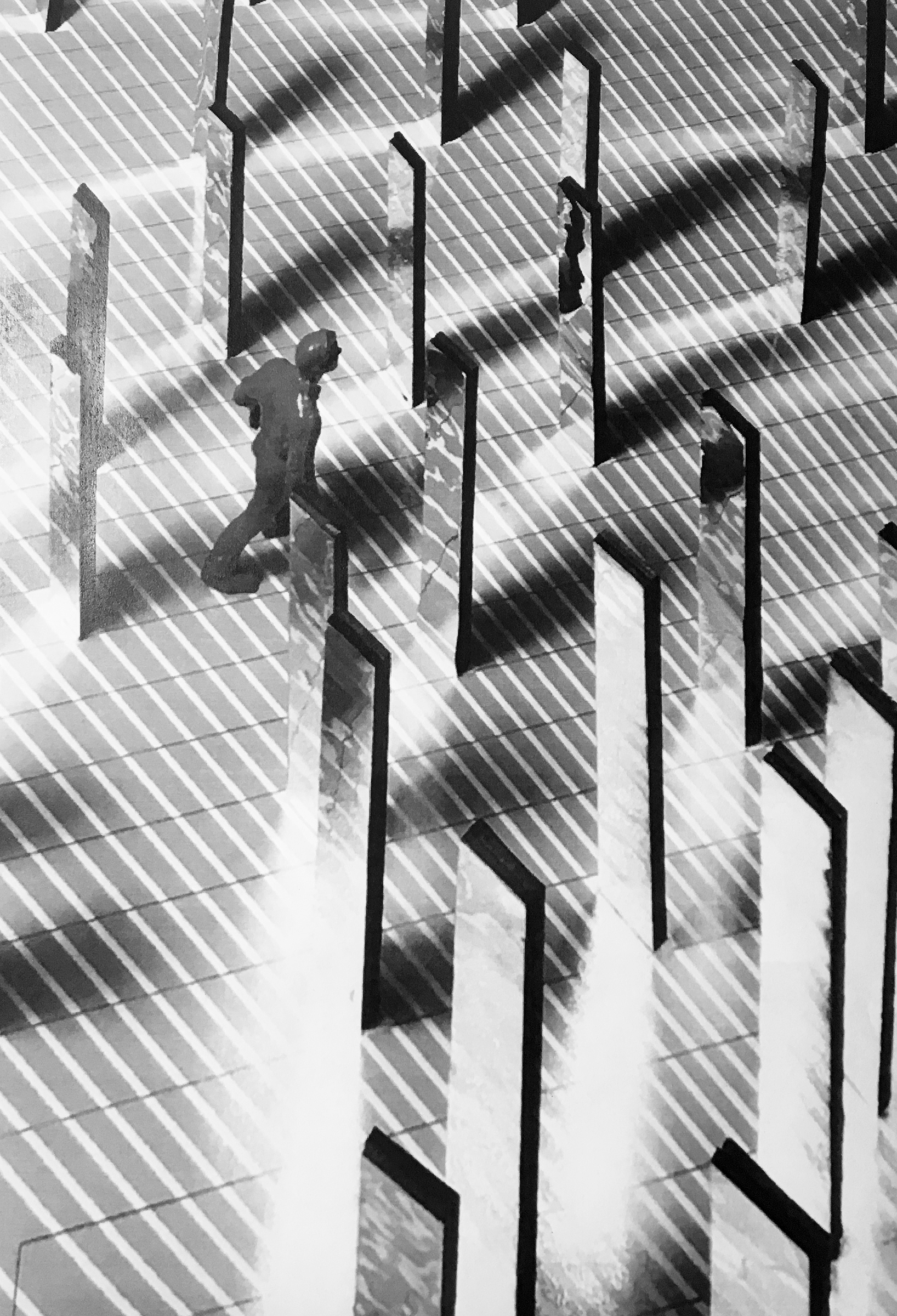Optics of Injustice
Location: Elaine, Arkansas
Year: 2016
Status: Proposal
Program: Memorial
Area: n/a
In collaboration with Kevin Kunstadt
Several years back, L/AND/A met with Bryan Stevenson of the Equal Justice Initiative to discuss a memorial for a historically under acknowledged racially motivated massacre that had occurred in Elaine, Arkansas in 1919. Conflicting historical accounts of the incident placed the number of individuals killed to be anywhere between 100 – 237 people, while others believe the number to be even higher. EJI was interested in constructing a memorial in Elaine in order to draw greater attention to this particular atrocity as well as to the plight of African Americans throughout the Jim Crow South.
L/AND/A proposed a large rectangular memorial constructed of steel posts; each post would correspond to a specific individual and would be reflective along its length, black along its width. The posts are staggered in plan, but all oriented towards a single, occupiable central viewpoint. The intent was to produce two distinct types of visual experience, each the result of the viewer’s movement through space as they occupied the memorial over time.
The first visual experience of the memorial is one of confusion and lack of specificity. Wandering through the site would be disorienting. The reflective surfaces would at times mirror each other, producing a complex and shifting array of visual information. Or – in an entirely different location – the reflections might render the memorial invisible entirely. Our intent to utilize this visual strategy corresponded to the lack of historical accuracy and understanding about the event as well as our tendency as a society to view atrocities like this from afar, considering them in the abstract and as displaced from reality.
However, the design’s geometric precision offers a second experience. Along the diagonal that divides the memorial in half is an inclined path that gradually elevates the viewer, placing them at eye level with the top of each vertical post once they’ve reached the site’s center. At this point, the reflective sides of the posts are no longer visible, and only the black edges remain within the viewer’s line of site. The effect is startling: A field of vertical black lines with just the slightest space between them: all clearly visible and uniquely individuated from the very same point of view. In this moment/spot, the viewer encounters the true, objective quantity of lives lost. The design aims to offer a visual counterpoint to the lack of specificity and level of abstraction that often accompanies our historical understanding of such a tragic event.
Conceptual Sketch
Memorial site plan showing perceptual relationship between “centered” viewer and objects.
Memorial Site Plan
Section through path.
View near memorial’s center






